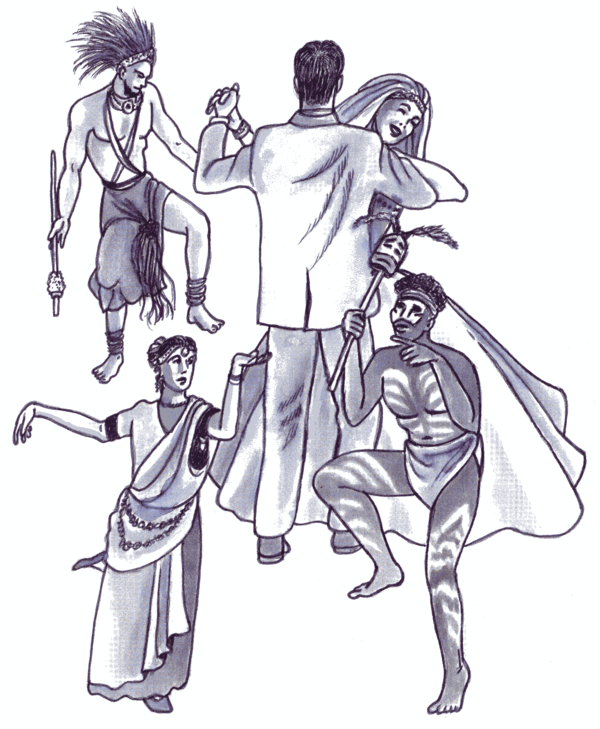| << Chapter < Page | Chapter >> Page > |
With this activity you will discover the wonderful diverse world of dance and find out more about the historical background of the dances done by your elders.
Background: Social Dancing
Dancing is both the most artistic of social pastimes and the most social of artistic pastimes. In all societies, dance forms an integral part of the lifestyle. Dancing is not only a reflection of life but is a basic human expression of life itself.
While the initial motivation to dance is often a social one, once past the hurdle of actually learning to dance, many find in the music, the atmosphere and the dance the opportunity to take on a new persona. In an instant, the dancer can be mentally and emotionally carried away to almost any scenario of their choosing – a Texas Barn Dance, an elegant Gala Ball in Vienna, a Caribbean beach party, a smart dinner dance in London’s West End, a back street bar in Buenos Aires, a carnival in Copacabana, a bodega in old Havana, a bullfight in Valencia, a New York night spot or a Parisian café.
The music and the venue create the atmosphere but it is the dancers who express their own individuality through the language of dance.
You do not need to be a good dancer to enjoy dancing, the music, the mood, the atmosphere and, of course, the social life. Dancing is accessible to everyone irrespective of their age or ability.
Dancing is a fabulous way of keeping fit both physically and mentally. And the great thing is that it is so much fun!
Dances to explore.
Fill in the cultures/countries of the above-mentioned dances.
| The D ance | The Culture |
| Waltz | |
| Two-step | |
| Line Dancing | |
| Volkspele | |
| African Tribal Dancing | |
| Foxtrot | |
| Indian Dancing | |
| Rock ‘n Roll | |
| Jive | |
| Paso Doble | |
| Lambada | |
| Tango |

Research Assignment
- music
- props
- costumes
- make-up
- pictures
Presentation questionnaire:
1. Why did you choose this specific culture for your research?
2. Would you like to perform this dance?
3. What was the most interesting aspect of your research? Why?
4. Did you like the music or accompaniment? Why?
5. Is there another culture’s dance you would like to research? Why?
6. What are the similarities between the dances of the different cultures in your class?
7. What do the movements in the dance tell you about the culture?
8. Describe the sequence of the dance:
- How does it begin?
- What happens next?
- How does it end?
9. Which movements are similar in the dances you have learned about from your classmates?
10. Is dancing today similar to the dancing you have researched? How similar or different is it?
| Learning Outcomes(LOs) |
| LO 2 |
| REFLECTION The learner will be able to reflect critically and creatively on artistic and cultural processes, products and styles in past and present contexts. |
| Assessment Standards(ASs) |
| We know this when the learner: |
| DANCE |
| 2.1 researches the historical background of dances done by their elders in terms of social or cultural contexts, purpose and unique characteristics; |
| DRAMA |
| 2.2 finds out about different types of drama in the country and makes connections between some of them in terms of origins and similarities; |
| MUSIC |
| 2.3 listens to and discusses the use of repetition as an organising principle in African music; |
| 2.4 selects a repertoire of songs that are used in various cultural environments, describes what cultural events they are drawn from, explains what the message of the lyrical content is and what the songs are used for; |
| VISUAL ARTS |
| 2.5 identifies the main purposes and design features of artworks in the home, the community and public places in terms of theme, subject and scale; |

Notification Switch
Would you like to follow the 'Arts and culture grade 6' conversation and receive update notifications?